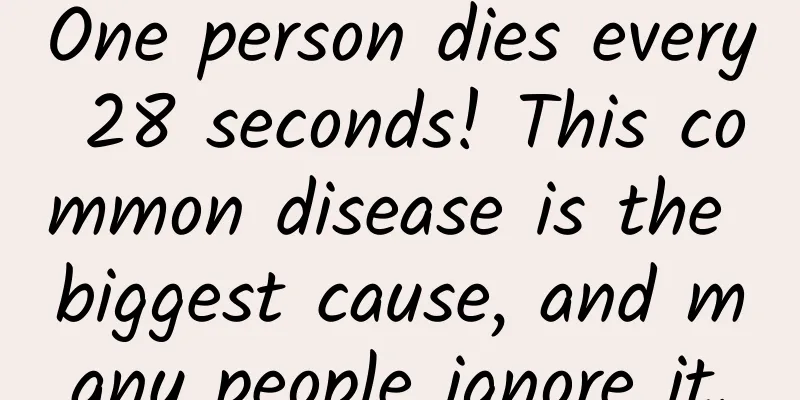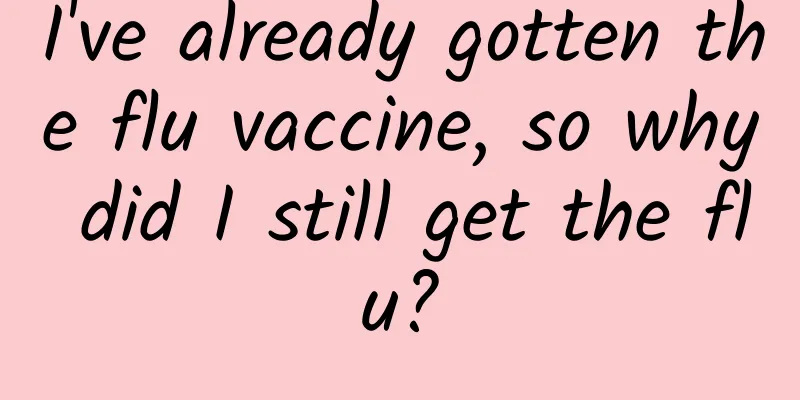One person dies every 28 seconds! This common disease is the biggest cause, and many people ignore it.

|
In recent years, the incidence of hypertension in China has been steadily increasing, from 5.1% in 1958-1959 to 23.2% in 2012-2015, which means that about a quarter of Chinese adults suffer from hypertension. Many people think that having high blood pressure is not a big deal, but they don’t know that the complications caused by high blood pressure are quite scary, such as cerebral infarction, which we usually call "stroke". Today we will talk about the relationship between high blood pressure and cerebral infarction, and how to prevent these potential dangers. Copyright images in the gallery. Reprinting and using them may lead to copyright disputes. More than half of strokes are related to high blood pressure According to the "China Stroke Prevention and Control Report (2023)", there are 12.42 million stroke patients in people aged 40 and above in my country. On average, one person suffers a first or recurrent stroke every 10 seconds, and one person dies from stroke every 28 seconds. Among the survivors, about 75% have sequelae and 40% are severely disabled. There are many factors that influence stroke, among which hypertension is the number one risk factor for stroke. Hypertension and its consequences are associated with more than 50% of ischemic stroke and 70% of hemorrhagic stroke. The effect of hypertension on cerebrovascular disease is a gradual process involving multiple mechanisms: 1. Increased vascular stiffness Hypertension can cause our blood vessels to lose their elasticity, become stiff and inelastic. Such blood vessels will be more fragile and more easily damaged when facing the impact of blood. Damage to the endothelium may gradually form a blood clot, or the blood vessels may directly rupture and cause cerebral hemorrhage. 2. Damage to cerebral blood vessels caused by blood pressure fluctuations Studies have shown that patients with large blood pressure fluctuations have more than twice the risk of stroke as those with small fluctuations. This unstable blood pressure state will cause the cerebral blood vessels to experience huge pressure changes in a short period of time, which can easily lead to blood vessel rupture or blockage. 3. The invisible threat of cerebral small vessel disease Hypertension can cause thickening of blood vessel walls and narrowing of lumen, which in turn can lead to high signals in the white matter (common in MRI examinations). Although these changes may not necessarily cause obvious symptoms, they are the main cause of stroke, especially lacunar infarction and cerebral hemorrhage. Copyright images in the gallery. Reprinting and using them may lead to copyright disputes. 4. Impaired blood flow regulation Our brain has an important self-protection function - automatically regulating cerebral blood flow, that is, maintaining stable cerebral blood supply when blood pressure fluctuates. However, long-term hypertension will break this balance, causing cerebral blood flow to be overperfused when blood pressure rises or insufficient when blood pressure drops, further increasing the risk of stroke. 5. Endothelial dysfunction and blood-brain barrier disruption Hypertension can also damage the function of vascular endothelial cells, reduce the release of nitric oxide (NO) that protects blood vessels, and induce inflammatory responses and oxidative stress. This will not only make the blood vessel walls more fragile, but also damage the blood-brain barrier, making the brain more vulnerable to damage and increasing the possibility of cerebral hemorrhage. 6. Acute effects of short-term hypertension Some people may experience a sudden spike in blood pressure, such as when they are emotionally unstable or physically overworked. This acute increase in blood pressure can directly lead to the rupture or occlusion of small blood vessels in the brain, especially a high-risk factor for deep cerebral hemorrhage and lacunar infarction. Risks behind high blood pressure: How does hypertension cause cerebral hemorrhage and cerebral infarction? There are two main types of stroke: hemorrhagic stroke (cerebral hemorrhage) and ischemic stroke (cerebral infarction). Both of them are closely related to cerebral hemorrhage. Cerebral hemorrhage, also known as hemorrhagic stroke, is caused by rupture of blood vessels in the brain, which causes blood to enter the brain tissue directly, compressing the brain nerves and damaging brain function. Long-term high blood pressure can cause the blood vessel walls to become thinner and lose elasticity. If the blood pressure rises suddenly due to severe emotional fluctuations or physical activities, the weak blood vessel walls may rupture and cause cerebral hemorrhage. Cerebral infarction, also known as ischemic stroke. Hypertension is one of the important risk factors for atherosclerosis. Atherosclerosis can cause cerebral artery stenosis or occlusion, inducing thrombosis. Once the thrombus completely blocks the cerebral artery, it will cause ischemia and hypoxia of brain tissue, and then cause brain cell death. This is cerebral infarction. Many people cannot clearly distinguish between cerebral hemorrhage and cerebral infarction. In fact, their typical manifestations are obviously different: Cerebral hemorrhage may cause severe headache, nausea, vomiting, and coma in patients with heavy bleeding; Typical symptoms of a stroke are sudden weakness of the face, arms, or legs, especially on one side of the body; slurred speech or difficulty understanding speech; and vision problems, usually without clear consciousness. At first glance, they are easy to distinguish, but they are often very similar, which makes it difficult for many people to clearly distinguish between cerebral hemorrhage and cerebral infarction. Patients with cerebral hemorrhage may also show unilateral weakness in the face, arms or legs, crooked mouth, slurred speech, and vision problems. Like cerebral infarction, it may occur suddenly during daily activities; and some of their risk factors are the same, such as high blood pressure, smoking, drinking, middle-aged and elderly people, and men. Copyright images in the gallery. Reprinting and using them may lead to copyright disputes. Even doctors need to use CT and MRI to distinguish. For example, cerebral hemorrhage usually appears as a high-density shadow on CT, while cerebral infarction usually appears as a low-density shadow. It is not recommended for ordinary patients to judge which condition they are in by themselves. If you suspect you have a stroke, should you take aspirin immediately? Aspirin is an antiplatelet drug that inhibits platelet aggregation and prevents thrombosis, but it also makes the person taking it have a tendency to bleed. Therefore, taking aspirin will aggravate the condition of patients with cerebral hemorrhage. For patients with cerebral infarction, it is not recommended to take aspirin at the first time. Instead, they should go to the hospital for thrombolysis as soon as possible. They should only consider taking aspirin if thrombolysis is not possible or 24 hours after thrombolysis. First of all, if you have suspicious symptoms of stroke (see previous article), you should lie down and rest and call 120 immediately. 120 will send you to the nearest hospital for diagnosis and treatment. You should not take medicine on your own, because even patients with cerebral infarction have a certain risk of bleeding when taking aspirin, so it must be taken under medical supervision. Both types of stroke are closely related to hypertension. Patients with hypertension have a higher risk of stroke than people with normal blood pressure. Therefore, controlling blood pressure to normal levels is important for preventing stroke. To avoid high blood pressure Pay attention to these points Hypertension is the biggest risk factor for stroke. If you have hypertension, you must check your blood pressure regularly and receive standardized treatment. To prevent high blood pressure, we should not only rely on the doctor's advice, but more on the choices and habits of each of us in our daily lives. First, a low-salt diet should be promoted to control the intake of high-sodium foods. Increase the intake of potassium-rich foods (except for kidney disease and hyperkalemia). The most effective healthy eating pattern at present is the Mediterranean diet, which is mainly composed of unsaturated fatty acids and high-quality protein, emphasizes the intake of more whole grains, vegetables and fruits, and reduces the intake of red meat, sugar and sugary drinks. This eating habit has shown a positive effect on lowering blood pressure in many studies. Secondly, good exercise habits are also important, and mental health is equally important. Finally, regular physical examinations are another key to preventing high blood pressure. Remember, the best treatment is prevention. Start by controlling high blood pressure and every healthy daily habit to reduce the incidence of stroke and build a healthy defense for yourself and your family. References [1]WangJG, ZhangW, LiY, etal. Hypertension in China: epidemiology and treatment initiatives. Nat Rev Cardiol. 2023;20(8):531-545. [2]WebbAJS, WerringDJ.NewInsightsIntoCerebrovascularPathophysiologyandHypertension.Stroke.2022;53(4):1054-1064. [3]AnSJ,KimTJ,YoonBW.Epidemiology,RiskFactors,andClinicalFeaturesofIntracerebralHemorrhage:AnUpdate.JStroke.2017;19(1):3-10. [4]KuriakoseD,XiaoZ.PathophysiologyandTreatmentofStroke:PresentStatusandFuturePerspectives.IntJMolSci.2020;21(20):7609. [5] Chinese Society of Neurology, Chinese Society of Neurology Cerebrovascular Disease Group. Chinese Guidelines for the Diagnosis and Treatment of Acute Ischemic Stroke 2023. Chinese Journal of Neurology, 2024, 57(06): 523-559. [6] Chinese Society of Neurology, Chinese Society of Neurology Cerebrovascular Disease Group. Chinese Guidelines for the Diagnosis and Treatment of Cerebral Hemorrhage (2019). Chinese Journal of Neurology, 2019, 52(12): 994-1005. [7] Wang Wenzhi, Gai Siqi. Primary prevention of cerebrovascular disease. Chinese Journal of Neurology, 2020, 53(8): 614-622. [8] Chinese Society of Neurology, Chinese Society of Neurology Cerebrovascular Disease Group. Guidelines for secondary prevention of ischemic stroke and transient ischemic attack in China 2022. Chinese Journal of Neurology, 2022, 55(10): 1071-1110. [9] Chinese Society of Neurology, Chinese Society of Neurology Neurorehabilitation Group, Chinese Society of Neurology Cerebrovascular Disease Group. Chinese Guidelines for Early Rehabilitation Treatment of Stroke. Chinese Journal of Neurology, 2017, 50(6): 405-412. Planning and production Author: Jiang Yongyuan, Master of Internal Medicine, Third Military Medical University Reviewer: Li Jingjing, Professor and Chief Physician, Department of Neurology, Beijing Tiantan Hospital |
<<: Will long-term "digging for gold" with the nostrils lead to dementia?
Recommend
Female lumbar spine pain on both sides
Some women experience soreness and pain in the pe...
Are strawberries really the dirtiest fruit? Can we still eat them without worry?
Netizen question: It is strawberry season recentl...
1.30 - World Neglected Tropical Diseases Day
1.30 - World Neglected Tropical Diseases Day Lear...
What should women eat during menstruation?
Everyone knows that every month, women will have ...
What to do if there is fluid accumulation in the uterus
For those friends who have been diagnosed with fl...
How to treat symptoms of urinary tract infection in women
As the pace of life is gradually accelerating, ma...
Can pregnant women drink Shuanghuanglian?
As we all know, a woman's body is very fragil...
How much is the appropriate temperature for air conditioning during confinement in summer
What is the appropriate temperature for the centr...
Can ectopic pregnancy lead to spontaneous abortion?
Pregnancy is a happy thing for every woman, but i...
Oral diseases caused by taking medicine (Part 2)
In the previous article, we simply introduced two...
What causes pain on the right side of the breast when coughing?
Coughing is a stress response of our body. For ex...
How long does it take to heal the cervix?
Regular routine examinations of the uterus can ef...
What happens if gynecological inflammation is not treated?
The symptoms of gynecological inflammation are ve...
Can I make cakes without sugar? What can I use instead of sugar?
We all know that cake is a common dessert. It has...
Is it a boy or girl if my legs are swollen during pregnancy?
Pregnant women in their fifth month of pregnancy ...









